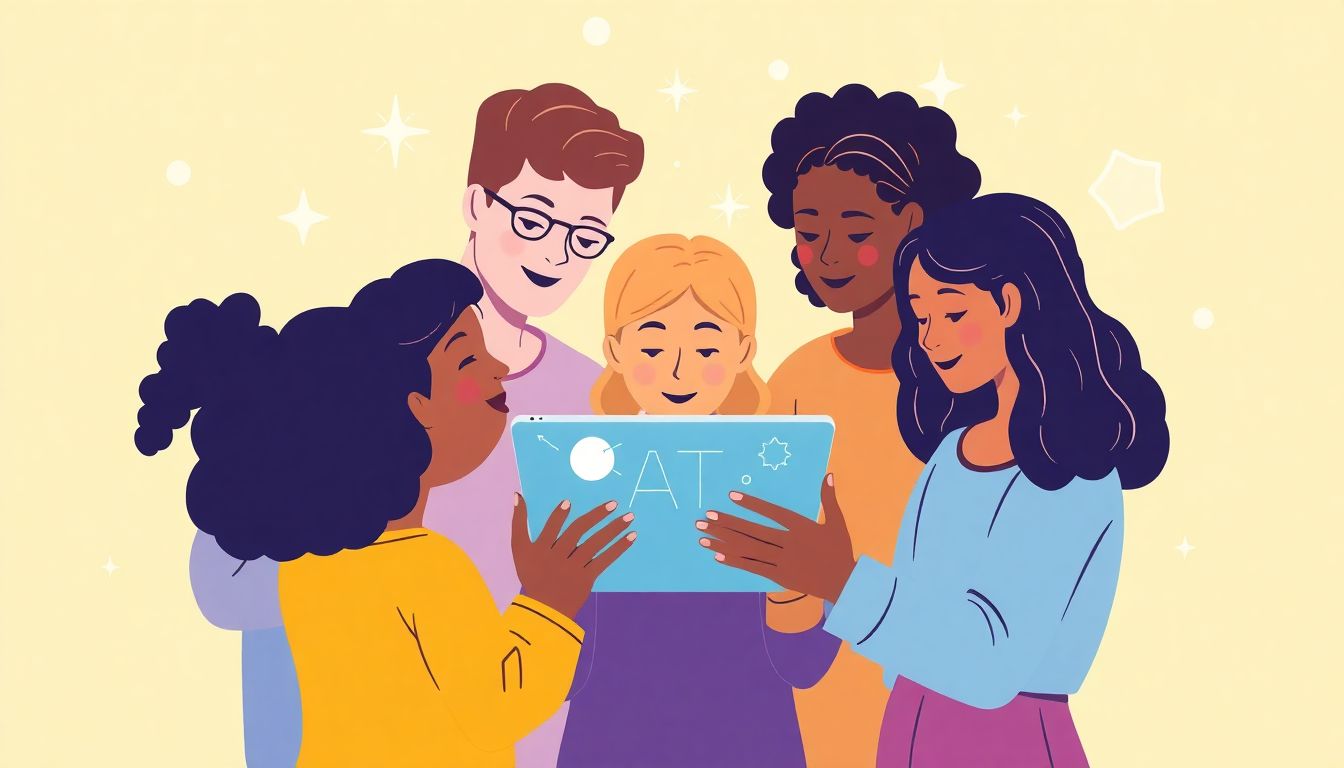Personalizing learning can feel like a daunting task, right? With so many different students, each with unique needs, it’s easy to feel overwhelmed about how to cater to everyone effectively. The good news is, you’re not alone in this struggle!
If you stick with me, I promise you’ll discover how AI is changing the game for educators and learners alike. Imagine tapping into technology that tailors learning experiences specifically to each student’s strengths and weaknesses.
In this journey, we’ll explore how AI can implement adaptive learning, design personalized curriculums, and keep students engaged while ensuring they’re skilled and career-ready. Let’s dive in!
Key Takeaways
- AI personalizes learning by adapting content and teaching styles to meet individual student needs.
- Implement adaptive learning technologies to adjust lessons in real-time based on student performance.
- Create personalized curriculums by integrating students’ interests into lesson plans.
- Use automated assessments for instant feedback, helping students identify strengths and areas for growth.
- Increase engagement through gamification, making learning more interactive and enjoyable.
- Monitor student progress in real-time, providing timely support to improve learning outcomes.
- Focus on skill development and career readiness by addressing skill gaps with personalized resources.
- Support students’ emotional and cognitive needs for holistic learning experiences.
- Balance AI use with traditional methods to enhance critical thinking and learning effectiveness.
- Embracing AI can lead to better learning outcomes and increased investment in personalized education.

How AI Personalizes Learning Experiences
AI is transforming how we learn by tailoring experiences to individual needs, making learning more engaging and effective.
This personalization can mean adapting the pace, style, and content based on each student’s unique strengths and preferences.
A recent study showed that 73% of students found they understood the material better when using AI tools, highlighting the significant impact of personalized learning.
Step 1: Implement Adaptive Learning and Customized Content
To kick things off, consider using adaptive learning technologies that adjust in real-time based on how students are performing.
These systems analyze responses and modulate difficulty to align the curriculum with each student’s learning curve.
For instance, platforms like DreamBox Learning tailor math lessons by adapting to each learner’s pace and grasp of concepts.
This approach doesn’t just keep students engaged but also allows for more efficient study, as indicated by the 63% of students who report improved study habits with AI assistance.
Step 2: Design Personalized Curriculum
Creating a personalized curriculum starts by knowing your students well—what they like, where they struggle, and what excites them.
This can mean integrating various subjects into a cohesive learning experience that resonates with each student’s interests.
For example, if a student loves sports, weaving in statistics and math through sports data can help make the learning process more appealing and relatable.
By focusing on topics that matter to students, you not only increase their motivation but also improve retention rates.

Step 3: Utilize Automated Assessment and Feedback
Automated assessments leverage AI to evaluate student performance quickly and accurately.
These tools can provide instant feedback, helping students understand their strengths and areas for improvement.
For instance, platforms like Kahoot! and Quizlet allow educators to create quizzes that adapt to students’ responses.
Providing immediate feedback not only boosts confidence but also encourages a growth mindset.
Step 4: Increase Engagement and Motivation with AI
Engagement is crucial for learning, and AI can help make lessons more interactive.
Using gamification strategies, AI can turn learning into a fun experience where students earn rewards and compete in a friendly manner.
Tools like Classcraft incorporate game elements into classroom settings, promoting participation and enthusiasm.
With a projected market growth, personalized learning experiences are set to reach approximately $48.7 billion by 2030.
Step 5: Monitor Progress in Real-Time and Provide Adaptive Feedback
Real-time monitoring of student progress is a game changer.
AI tools can track performance metrics, offering insights that help teachers adjust instruction on the fly.
By using dashboards that visualize learning outcomes, educators can see which students need more support.
This timely intervention can drastically improve their learning trajectory.
Step 6: Focus on Skill Development and Career Readiness
Education today isn’t just about grades; it’s also about preparing students for future careers.
AI can identify crucial skills gaps and suggest personalized learning paths.
Resources like LinkedIn Learning and Coursera offer courses tailored to in-demand skills based on AI assessments.
Embedding job-related tasks in the curriculum ensures students are workforce-ready.
Step 7: Support Holistic Learning Needs
Understanding that every student is unique means addressing their emotional and cognitive needs.
AI systems can identify when a student struggles emotionally or needs encouragement, providing tailored support.
Tools like My Study Life help students manage their time effectively, supporting their overall well-being.
This holistic approach can lead to better academic results and emotional health.
Step 8: Address Challenges and Plan for the Future
No technology is without its challenges, and AI in education is no different.
Educators fear over-reliance on technology may hinder critical thinking.
It’s essential to find a balance, using AI to complement rather than replace traditional learning methods.
By understanding potential pitfalls, schools can implement AI responsibly and effectively.
Step 9: Embrace AI for Better Learning Outcomes
Ultimately, embracing AI can lead to significant improvements in learning outcomes.
As the AI in education market is projected to hit $88.2 billion by 2032, it’s clear that this technology is here to stay.
Using AI-driven tools can enhance both the teaching and the learning experience, driving students toward success.
With the data supporting investment into personalized learning, it’s time for educational institutions to take the leap.
FAQs
AI personalizes learning by analyzing individual performance data, preferences, and learning styles. It can adapt content and assessments in real-time, ensuring that each learner receives tailored experiences that enhance engagement and knowledge retention.
Automated assessments provide immediate feedback, helping learners identify strengths and weaknesses. This data informs content adjustments, ensuring that instructional methods remain aligned with each student’s progress and understanding.
AI enhances engagement through interactive content and personalized learning paths that match student interests. By offering adaptive challenges and rewards, learners are more motivated to participate and invest in their educational journey.
Challenges include data privacy concerns, the need for adequate infrastructure, and ensuring equitable access for all students. Educators must also be trained to effectively integrate AI tools into their teaching strategies.
